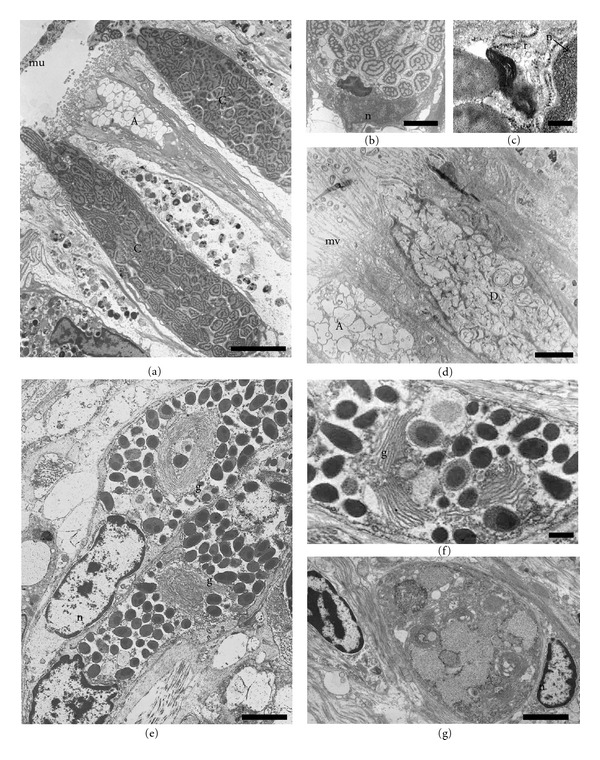Figure 5.

Transmission electron microphotographs of different types of side secretory cells (a–d) and subepithelial glands (e–g). (a) The characteristic secretory granules of the type C remain outside the cell, forming the mucus (mu). Type A with partially secreted granules can be observed. Bar: 5 μm. (b) Basal region of the type C cell showing a body with tightly packed membranes below the nucleus (n) Bar: 2 μm. (c) Detail of latter microphotograph showing a prominent rough endoplasmic reticulum (r) between nucleus (n) and the body. Bar: 0.2 μm. (d) A Type D cell with swirled membranous vesicles and a type A cell. Bar: 3 μm. (e) Subepithelial multicellular gland with a well-developed Golgi complex (g) and dense secretory granules associated. Bar: 2 μm. F. Detail of the Golgi complex (g) in the subepithelial multicellular gland. Bar. 0.5 μm. (g) Subepithelial unicellular gland. Bar: 2 μm.
